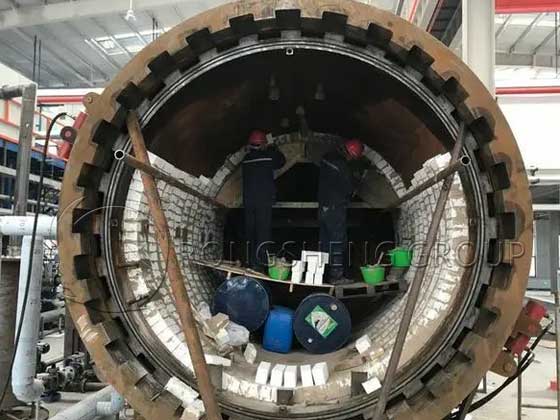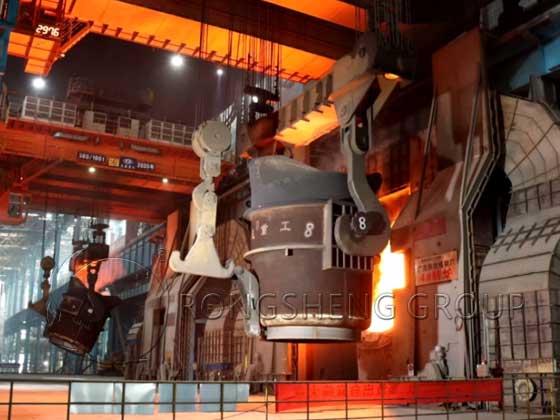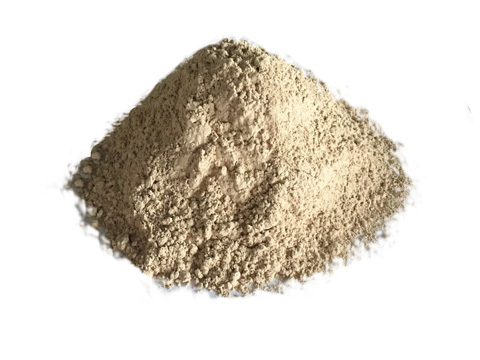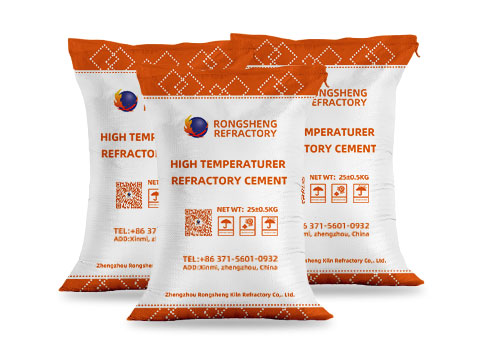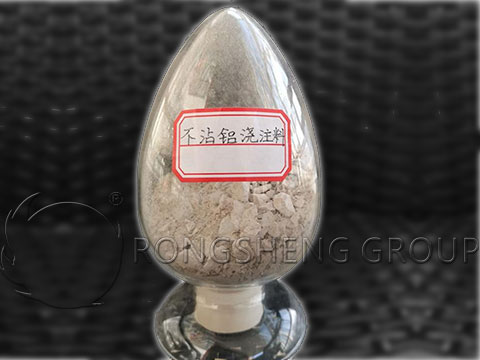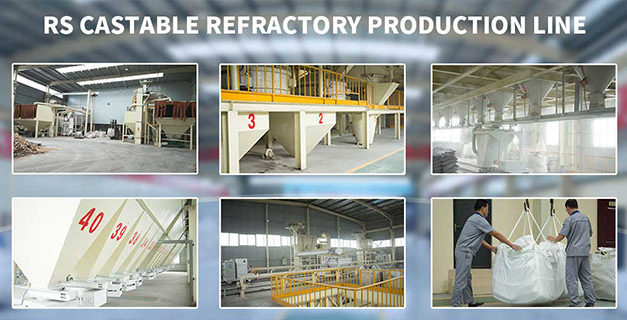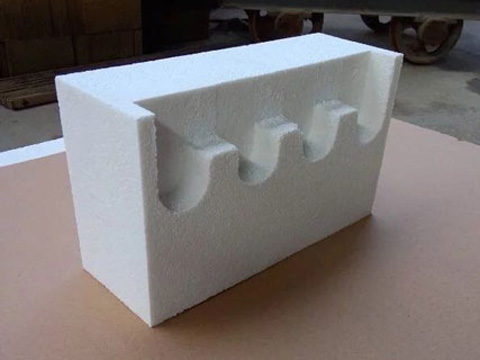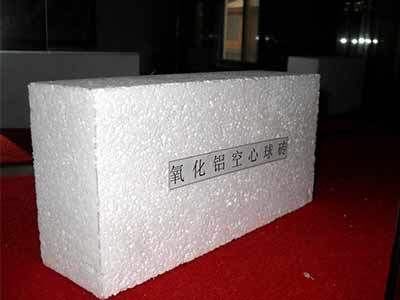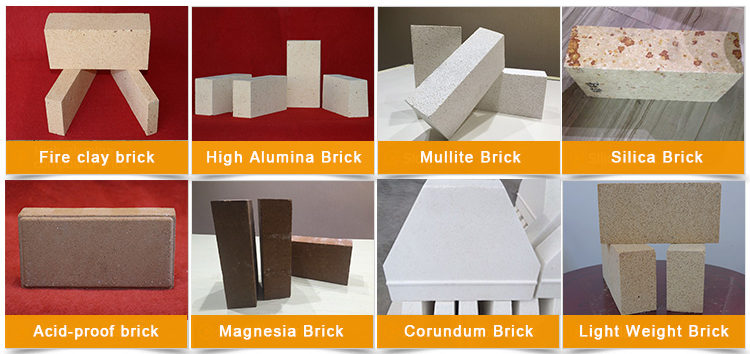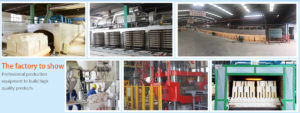In the sulfur reactor, the H2S combustion furnace has a higher operating temperature and is one of the single equipment with the highest design temperature. In its design, in order to improve the recovery rate of sulfur, the method of preheating the raw gas and air is generally used to increase the furnace temperature. At present, the operating temperature of the reactor has been increased from 1050°C to 1450°C. Coupled with the combustion support of alkane gas, the furnace temperature may reach 1600°C. Therefore, it is a great challenge to the refractory materials built in the furnace.
The production of sulfur currently uses the Claus process to recover sulfur from acid gas containing H2S. This production process is common in coal gasification or petrochemical industries, because H2S is the main by-product in the production of such industries. The process principle is to use the partial combustion method in the sulfur recovery device, that is, introduce all the acid gas into the combustion furnace, and distribute the air according to the complete combustion of hydrocarbons and the complete combustion of 1/3 H2S to generate SO2. For H2S, the reaction results in that about 65% (mass fraction) of H2S in the furnace is converted into S vapor, 1/3 of the remaining 35% (mass fraction) of H2S is burned into SO2, and 2/3 remains unchanged. Among them, 65% of the S vapor generated by the reaction is condensed and captured in the waste heat boiler, while the remaining H2S and SO2 reacted in the furnace react under the action of the catalyst in the converter to further generate S. In order to react uniformly and prevent impact on the hot end of the waste heat boiler, a flower wall is built in the middle of the furnace. The main medium in the furnace is H2S + SO2 + high-temperature gas containing S vapor. The operating pressure is not greater than 0.05MPa, and the operating temperature is not greater than 1450°C. Made of refractory materials, thickness 400mm.

Difficulties in Selecting Refractory Materials for Masonry Reactors Producing Sulfur
- (1) The furnace temperature is high. The working temperature is 1100~1450℃, which is a furnace with a higher working temperature. Under occasional operating conditions, the furnace temperature may reach 1600°C or higher.
- (2) There are various corrosive components such as H2O, H2S, SO3, SO2 and S vapor in the furnace. H2S has reducing properties. As a result, there are strict restrictions on certain impurity components in furnace lining materials.
- (3) Acid gas combustion furnace has no heating surface inside the furnace. Any large fluctuation during combustion means a thermal shock to the furnace lining, which requires the furnace lining to have good thermal shock resistance.
- (4) The combustion furnace has strict requirements on wall temperature and requires the furnace lining material to have good thermal conductivity.
Selection of Several Domestic Mainstream Refractory Materials
2.1 Corundum castable material material
At the earliest, corundum castable linings were commonly used as lining materials for acid gas reactors in sulfur recovery units at home and abroad. The reason is that the corundum castable lining not only has a higher fire resistance temperature but also has better wear resistance. However, due to its poor thermal shock resistance, problems such as peeling and falling off may occur within a short period of time, and it will be gradually eliminated over time.
2.2 High alumina brick + corundum brick material
The lining material of the original acid gas combustion furnace is high alumina brick + corundum brick. The brick joints are one of the weakest links. Damage to the brick joints often leads to overall deformation and collapse of the masonry. On the other hand, high alumina bricks and corundum bricks are difficult to process and manufacture, difficult to fit into some special-shaped parts, and the cost is also high.
2.3 Steel fiber castable material
Steel fiber castables have achieved good results in catalytic converters and other applications due to their good fire resistance. However, in the case of acid gas combustion furnace, this material is prone to problems such as agglomeration and deep cracks.
2.4 Combined material of castable and ramming material
Castable combined with ramming makes a very good high-temperature-resistant lining. The composition (mass fraction) of ramming material is 85% AL2O3+15%SiO2. Has the following salient features:
- ①High temperature resistance (up to 1800℃) and high strength.
- ②The furnace wall support is hanging type, which is not easy to deform or fall off.
- ③The insulation layer is constructed by pouring, and the working layer is constructed by pounding. It can be made into any shape (especially in special shapes) and is easy to construct. Its combined structure is dense and solid, with no gaps in the walls.
- ④When the lining is supported by anchors, the furnace wall can withstand peeling and protrusion, making maintenance easy.
- ⑤The lining material has good peeling resistance and will not embed foreign matter.
- ⑥Short oven time, fast and economical construction
To purchase high-quality refractory lining materials, please contact us. We can provide high-quality refractory products and customer service.

